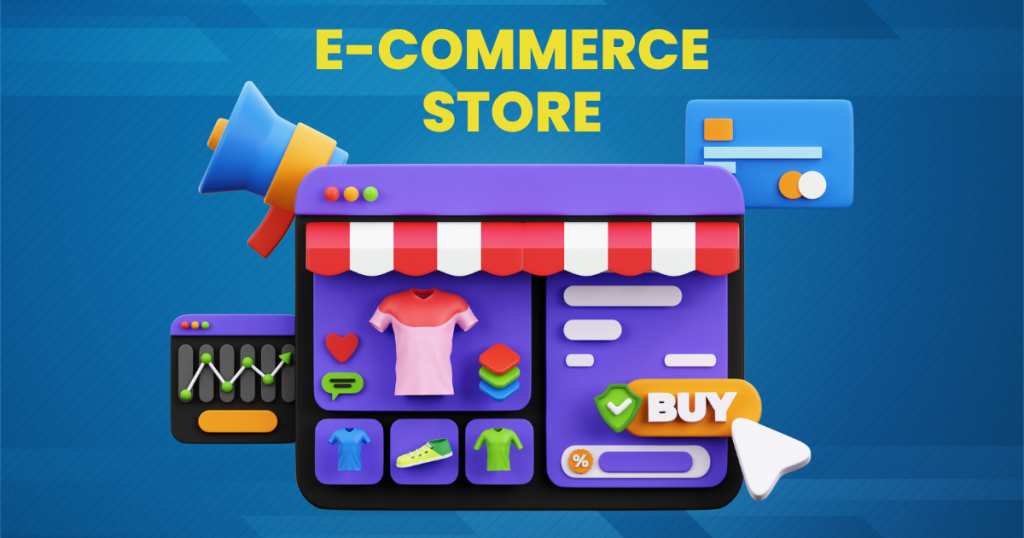
In today’s digital age, launching an online store can be a rewarding venture, offering the opportunity to reach a global audience and capitalize on the growing trend of ecommerce. However, building a successful online store requires careful planning, strategic execution, and a deep understanding of your target market. Whether you’re a seasoned entrepreneur or a budding startup, here’s a comprehensive guide on how to establish and grow your online store from the ground up.
1. Define Your Niche and Research Your Market
Before diving into the technical aspects of building your online store, it’s crucial to define your niche market. Identify a specific product or service that you’re passionate about and that meets a need within your target audience. Conduct thorough market research to understand your competitors, target demographics, and current industry trends. This groundwork will lay the foundation for your business strategy and help differentiate your store in a crowded marketplace.
2. Choose the Right Ecommerce Platform
Selecting the right ecommerce platform is one of the most critical decisions you’ll make. Consider factors such as ease of use, scalability, customization options, and pricing. Popular platforms like Shopify, WooCommerce (built on WordPress), and BigCommerce offer robust features and integrations that cater to various business needs. Choose a platform that aligns with your technical skills and business goals, ensuring it supports your long-term growth.
3. Design a User-Friendly Website
Your website’s design plays a pivotal role in attracting and retaining customers. Opt for a clean, intuitive layout that enhances usability and facilitates seamless navigation. Use high-quality images and videos to showcase your products effectively. Incorporate a responsive design to ensure your site looks and functions flawlessly across devices, including smartphones and tablets. Remember, a positive user experience can significantly impact conversion rates and customer satisfaction.
4. Develop Compelling Product Pages
Craft compelling product descriptions that highlight key features, benefits, and unique selling points. Use persuasive language to entice potential customers and address common concerns or questions. Implement clear calls-to-action (CTAs) that guide visitors towards making a purchase. Additionally, optimize product pages for search engines by including relevant keywords naturally within your content.
5. Implement Secure Payment Gateways
Security is paramount in ecommerce. Integrate trusted payment gateways that offer secure transactions and protect customer information. Display trust badges and SSL certificates prominently to reassure visitors of your site’s credibility and commitment to data protection. Simplify the checkout process with guest checkout options and multiple payment methods to minimize cart abandonment rates.
6. Drive Traffic with Effective Marketing Strategies
Once your online store is live, focus on driving targeted traffic to your website. Leverage digital marketing tactics such as search engine optimization (SEO), pay-per-click (PPC) advertising, content marketing, and social media promotions. Develop a content calendar to consistently publish relevant blog posts, product updates, and customer testimonials. Engage with your audience through email marketing campaigns and personalized offers to nurture relationships and encourage repeat purchases.
7. Monitor Performance and Optimize Continuously
Monitor key performance metrics such as traffic sources, conversion rates, and average order value using analytics tools like Google Analytics. Gain insights into customer behavior and preferences to refine your marketing strategies and improve user experience. Conduct A/B testing on product pages, CTAs, and promotional campaigns to identify what resonates best with your audience. Stay adaptable and responsive to market changes to maintain a competitive edge.
8. Provide Exceptional Customer Support
Exceptional customer support is integral to building trust and loyalty. Offer multiple channels for customer inquiries, including live chat, email, and phone support. Respond promptly to customer queries and concerns, aiming for quick resolutions and personalized interactions. Implement a user-friendly return and exchange policy to enhance customer satisfaction and encourage future purchases.
Conclusion
Building a successful online store requires a combination of strategic planning, effective execution, and ongoing optimization. By defining your niche, choosing the right ecommerce platform, designing a user-friendly website, and implementing robust marketing strategies, you can create a compelling online presence that resonates with your target audience. Continuously monitor performance metrics, prioritize customer satisfaction, and adapt to industry trends to sustain long-term growth and success in the competitive ecommerce landscape.
Launch your online store with confidence, armed with the knowledge and strategies outlined in this guide, and watch your entrepreneurial vision come to life in the digital marketplace.
